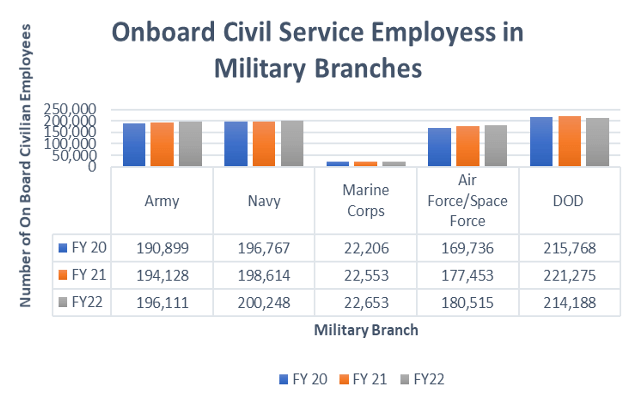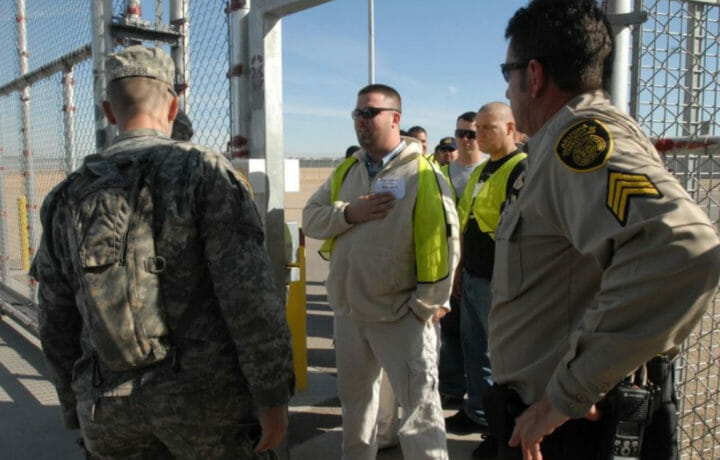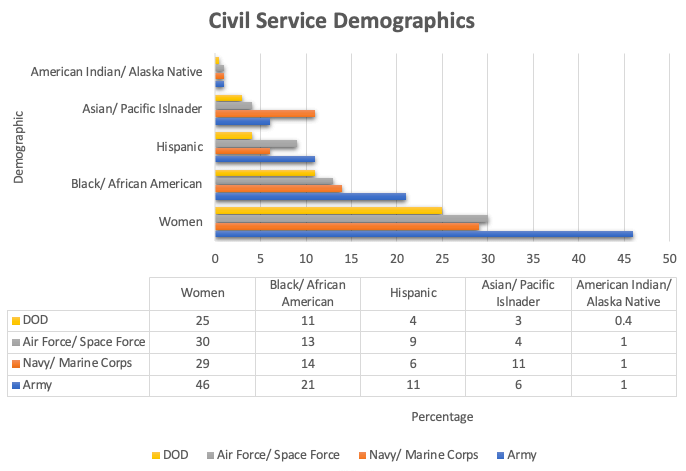Many servicemembers miss the comradery and structure of the military after they get out. Finding those two things together in the civilian world is rare, however one solution is working for the military as a federal civil service employee.
Background of the civil service
The civil service system within the federal employment is not new. It first started in the late 1800s and replaced the spoils system. Under the old system, presidential administrations could appoint their own supporters into civil service positions. Of course back then there were fewer positions to appoint.
Over time though, the federal civil service evolved into its current form as defined by the Civil Service Reform Act of 1978. Today hiring into most of the competitive civil service positions is based on merit and merit system principles and not on the whims of an administration currently in power. However, at the Senior Executive Service level, many of the positions, are still appointed by the current administration with some also requiring congressional approval to be filled.
Civil Service Structure
The civil service is comprised of three branches or subservices:
- Competitive
- Excepted
- Senior Executive
Of the three, competitive is the largest at around 80% of the approximate two million federal civil service employees. By comparison, Senior Executive is the smallest with around 7,000. Most of the civil service is administered by the Office of Personnel Management or OPM.
Civil Service Pay Systems
Within the Federal Civil Service Structure there are five different pay systems:
- The General Schedules (GS)
- Federal Wage System (FWS)
- General Law (GL)
- Foreign Service (FS)
- Senior Executive Service (SES)
Of these five, the ones most jobs fall under in competitive service are GS and FWS.
General Schedule
This is the most popular pay system with just over 1.5 million workers. It is comprised of 15 grades or salary levels – GS1 to GS15 – with 10 steps in each grade. Advancing up in steps can take anywhere between 6 months to 3 years within a specific grade; for example to get from Step 1 to Step 10 in a grade takes on average 18 years. In addition to length of service, advancement is also based on satisfactory job performance. The GS pay system generally covers civilian federal employees in professional, technical, administrative, and clerical positions. A typical breakdown of the grades are:
- GS-3 or GS-4: Typically, internships or student jobs
- GS-5 to GS-7: Most entry-level positions
- GS-8 to GS-12: Mid-level positions
- GS-13 to GS-15: Top-level supervisory positions
In theory under the GS system, all like-graded jobs pay the same. In other words, a GS-6 Step 5 administrative specialist would make the same regardless of location within the U.S. In reality though, this isn’t always true because of locality pay, which is a pay adjustment to offset high cost of living areas, such as New York or Los Angeles … along with other designated high cost locations.
Some jobs are multi-graded meaning they are listed with a range of grades. For example, a person might be hired at the GS-5 level of a job announced as a GS-5/7/9. That means the person in that position can move though those grades and steps to GS-9 without ever having to change positions.
Federal Wage System (FWS)
The FWS, also known as Wage Grade, is an hourly-based pay system for blue-collar workers, verses salary-based as is the case with the GS pay system. The pay under the FWS system aligns with similar jobs in the private sector in the fields of trade, craft, labor, and other blue-collar type jobs.
There are three classes in this pay grade – WG (worker), WL (leader), and WS (supervisor). WG and WL each have 15 grades with five steps in each grade; WS has 19 grades. It takes about 6 years to get to Step 5 of a grade.
Advancement to higher steps within the FWS is achieved based on satisfactory job performance and length of service. Because this pay system is locality-based, one benefit of it is that the pay rates equate to what similar jobs pay within a geographical area.
Pay surveys are done periodically to maintain pay equity with the private sector. Under the FWS system, a specific graded job and step in one location could pay more or less than the same one in another geographical area because of the locality pay principle.
Senior Executive Service
SES is different from the rest as it does not have grades, but levels. Employees selected for high-level executive positions are paid based on performance, education and experience. These positions typically occur right under Presidential appointees and account for 75% of heads of Federal agencies.
Civil Service Data Calculations
Civil service numbers are calculated in two different ways:
- Full-time equivalent (FTE)
- On-board personnel (OBP)
Not only is the difference in how the data is calculated, but also its use. FTE data is used to calculate budget while ODP is used for employment.
For example, an FTE unit is the number of hours worked per employee in a year compared to a standard of 2,080 hours per year per employee. ODP on the other hand is the number of employees; one ODP unit is one employee.
The chart below represents OPD by FY for each service branch and the DOD.

As the chart shows, all the individual military branches numbers of civilian employees have increased over the last three FYs. Only the DoD itself decreased with its FY22 numbers falling below the FY20 level.
So what do the numbers show? Opportunity. If you are already out, or thinking of getting out, and would like to get a job that has the familiarities and structure of the military, working as a defense civilian in federal civil service could fit your post-military career objectives. And not only does the opportunity exist in the active branches, there are also positions in the individual Reserves and National Guard.
Employee Diversity
Another familiarity with military service is the diversity of the workforce. The goal of the civil service in the DOD and military branches under it is to have a workforce that reflects the same diversity as the population of the United States. This chart shows the diversity currently in the DOD and military branches.
Note: The Coast Guard is not shown because it falls under the Department of Homeland Security.
Other benefits
Working as a civilian for the federal government has several other benefits besides good pay and job security. Some of the other equally attractive benefits include leave (vacation, family and sick), retirement, paid travel, and for veterans, seniority based on military service. Some agencies also offer veterans preference, which can give veterans an advantage when it comes to hiring for federal civil service positions.
If you want a job that resembles military service, but enjoy good pay and benefits, consider applying for civil service positions. It is like being in the military – but it’s not!



